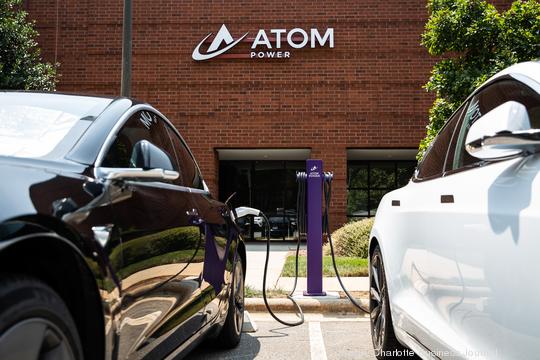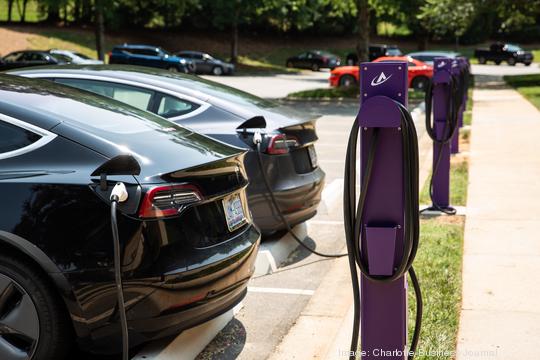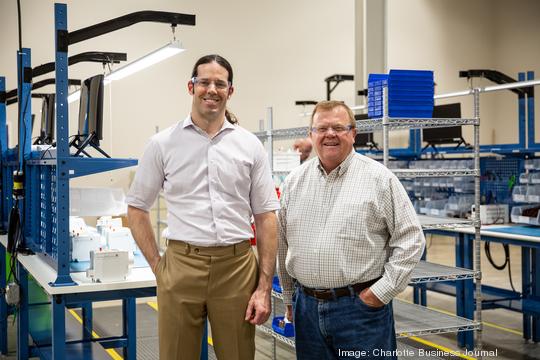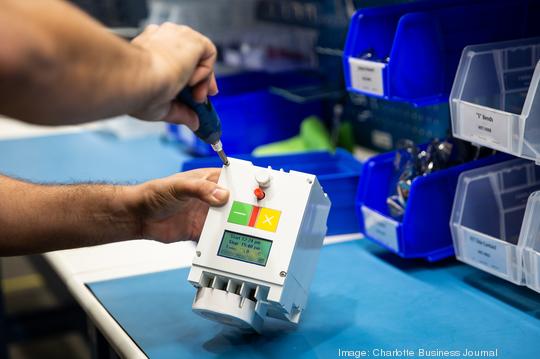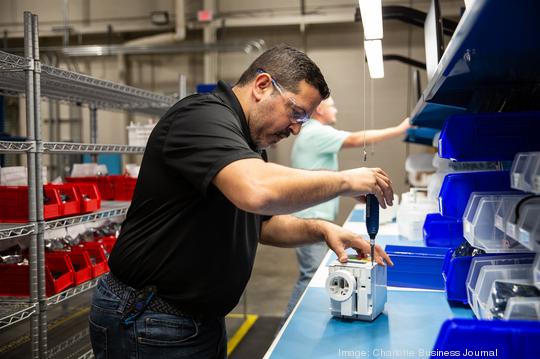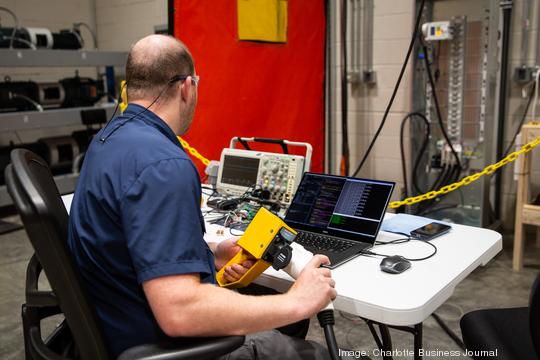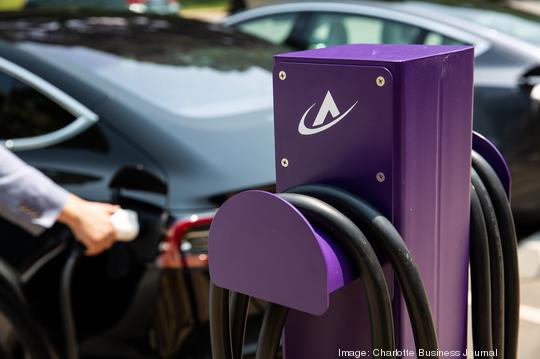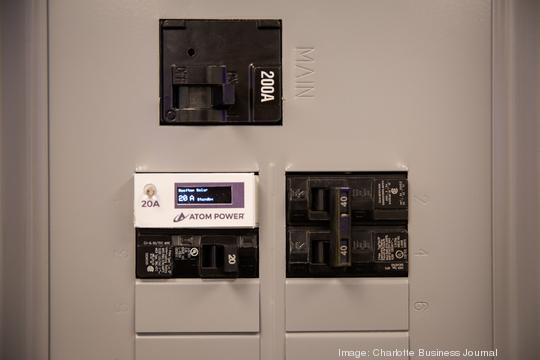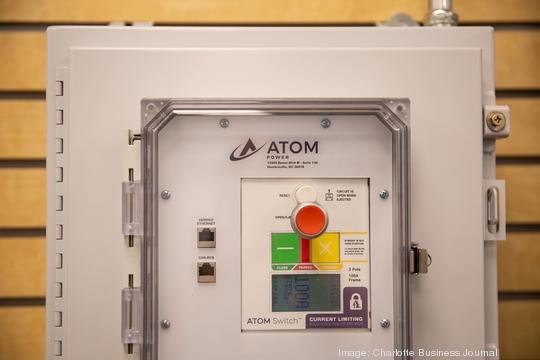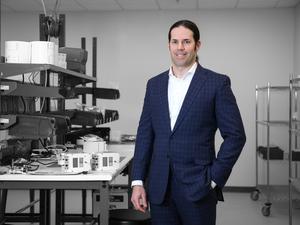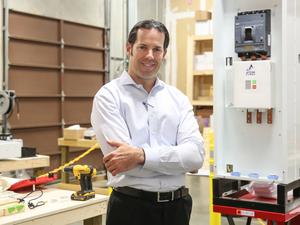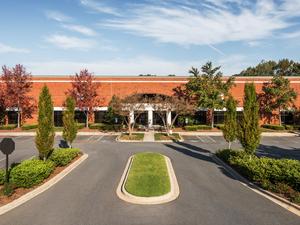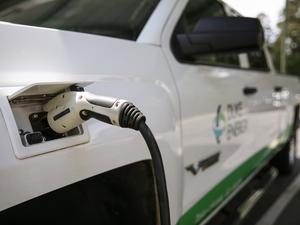As Atom Power ramps up production at its new 23,000-square-foot headquarters and production plant in Huntersville, the company is focusing squarely on the fast-growing electric vehicle charging market in manufacturing the third generation of its digital circuit breaker.
Founder and CEO Ryan Kennedy says Atom Power developed the ultra-fast digital circuit breaker, called the Atom Switch, and its Atom Panel and various control units with an eye largely on the industrial circuit breaker market.
The digital switch eliminates the threat of arc-flashing that's common to traditional mechanical circuit breakers, which can threaten electrical systems and the employees who work on them. They are also easily adapted to various power management jobs that mechanical circuit breakers are simply incapable of performing.
It was this second feature, Kennedy says, that led a major utility, a multifamily homebuilder and an electric vehicle manufacturer — whom Kennedy says he cannot identify for proprietary business reasons — to separately approach Atom Power last year about using the latest version of the switch as the foundation for a digital vehicle charging system.
“Charging had always been on our radar,” Kennedy says. “But we thought of it as a niche market. Then in 2020, it just exploded.”
That, he says, pushed his company to focus on the new opportunity.
Simple math
To Ron Thompson, who joined the company as senior vice president for business development in August, it’s simple math.
“The market for industrial circuit breakers is growing at about a 3% CAGR (compound annual growth rate), but EV charging is growing at a 40% CAGR,” Thompson says. “Which business do you want to be in?”
Atom Power was founded in 2014. It got the key UL — formerly Underwriters Laboratories — approval for its first switch in 2018. It now has approval for its third switch and that is what is being assembled at its Huntersville facility.
The company has grown to 30 workers now, from 25 in March, as its first line starts production. Thompson says plans call for establishing three more lines, just for the production of equipment for the vehicle chargers.
The company has designed the charging pillars, which Kennedy says are really little more than a holder for the wires connecting to the switches that actually control the charging flow. This is a major advantage for the Atom charger, as current charger designs require sophisticated — and expensive — charging equipment to be built into each pillar. The Atom Power pillar is cheaper to produce, he says, and does not leave any sophisticated electronics exposed to damage.
Easily replicated
Kennedy says the companies building the charging stations also avoid the cost of having to build the stations to the maximum possible load — generally a requirement for most charging stations. Because the switches in the system can individually manage the power flow, it can be designed to lower maximum loads which is managed by the automatic switches.
The company still sells Atom Switch and controls in the industrial market, Thompson says. But he says each of those control systems must be designed individually to specific industrial uses.
The charging systems are a single, easily replicated system that can be scaled up as the charging station serves more vehicles.
Thompson spent more than 30 years in business development at Eaton Corp., which was an early and important investor in Atom Power. He says he understood the high barriers that a new entrant like Atom Power could face as it tried to break into the slow-changing industrial market, where four major players — including Eaton — produced almost all the world breaker switch equipment.
There are no such entrenched companies in EV charging, Thompson says. And that made it a natural for a company like Atom Power that has a new — and radically different — product to sell.
“It gives a quick hit for sales in a fast growing market,” he says.
Kennedy says it also simplifies the manufacturing process as his company ramps that part of its business up.
“It reduces our product line to essentially two products — fleet EV chargers and residential EV chargers,” he says. “It’s a much simpler model.”
